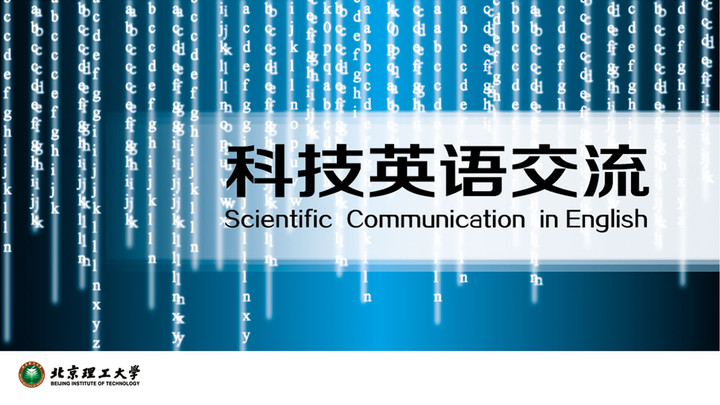
当前课程知识点:Modern Aesthetics:Mechanism and Laws > Chapter11 the Mechanism and Route of Aesthetic Education > 11.4 Method of Aesthetic Self-Cultivation > Modern Aesthetics and Moral Education
返回《Modern Aesthetics:Mechanism and Laws》慕课在线视频课程列表
Aristotle repeatedly emphasized that, for the purpose of education, "enriched ethical melodies and tunes" must be chosen.
Confucius believed that the three steps of self-cultivation of a moral gentleman was “thriving in poetry, standing in etiquette, and becoming in music”, and regarded “music” as the highest stage of moral cultivation.
Liang Qichao said: "the most sacred thing in the world is nothing but emotions. Understanding can guide people to know at most what to do and how to do, but for people being guided it doesn't matter whether they do it or not. Sometimes the more they know, the less things they do. The use of emotions to motivate people is similar to magnetics attracting iron, and the amount of magnetism that exists attracts the relevant amount of iron, and there is no elsewhere to escape."
Please combine the views from the above materials with your own experience and talk about your opinions on the relations between aesthetic education and moral education.
返回《Modern Aesthetics:Mechanism and Laws》慕课在线视频列表
-1.1 Exercises
-2.1 The Origin of Aesthetics
--2.1.2 Exercises
-2.2 The Findings of "Beauty" in Traditional Aesthetics
--2.2.2 Exercises
-2.3 The End of Traditional Aesthetics
--2.3.2 Exercises
-2.4 The Rise of Modern Aesthetics
--2.4.2 Exercises
-3.2 Exercises
-4.1 Research Object of Aesthetics
--4.1.2 Exercises
-4.2 The Composition of Aesthetic Phenomena
--4.2.2 Exercises
-4.3 Classification of the Aesthetic Phenomena
--4.3.2 Exercises
-5.1 The Causes of Aesthetic Sense of the Manifest Utilitarian Aesthetic Objects
--5.1.2 Exercises
-5.2 Reasons for Aesthetic Sense in the Hidden Utilitarian Aesthetic Objects
--5.2.2 Exercises
-5.3 Mechanisms of Aesthetic Phenomena
--5.3.2 Exercises
-6.1 Interpersonal Influence Forms of Aesthetic Psychology Law
--6.1.1.1 Exercises
--6.1.2.2 Exercises
-6.2 Social Status Forming the Aesthetic Psychological Law
--6.2.1.2 Exercises
--6.2.2.2 Exerxises
-6.3 The Level of Social Development Forms the Law of Aesthetic Psychology
--6.3.2 Exercises
-6.4 The Pursuit of Utility Forms the Law of Aesthetic Psychology
--6.4.1.2 Exercises
--6.4.2.2 Exercises
--6.4.3.2 Exercises
--6.4.8 Exercises
-7.1 The Instinct of Curiosity Forms the Aesthetic Psychological Law
--7.1.2 Exercises
-7.2 The Sexual Instinct Forms the Aesthetic Psychological Law
--7.2.2 Exercises
-7.3 The Creative Instinct Forms the Aesthetic Psychological Law
--7.3.2 Exercises
-7.4 The Life Instinct Forms the Aesthetic Psychological Law
--7.4.2 Exercises
-8.1 The Role of Vision in Aesthetic Activities
--8.1.2 Exercises
--8.1.4 Exercises
-8.2 The Role of Vision in Aesthetic Activities
--8.2.2 Exercises
--8.2.4 Exercises
-8.3 The Role of Smell in Aesthetic Activities
--8.3.2 Exercises
-8.4 The Role of Tactile Sense in Aesthetic Activities
--8.4.2 Exercises
-8.5 The Role of Temperature Sense in Aesthetic Activities
--8.5.2 Exercises
-8.6 The Role of Spatial Sense in Aesthetic Activities
--8.6.2 Exercises
-9.1 The Law of Aesthetic Psychological Enhancement
--9.1.2 Exercises
-9.2 The Law of Aesthetic Psychological Decline
--9.2.2 Exercises
-10.1 The Formation of Basic Forms of Art
--10.1.2 Exercises
-10.2 Mechanism by which the Basic Form of Art Causes Aesthetic Feelings
--10.2.2 Exercises
-10.3 Mechanisms in which Artistic Content Arouses Aesthetics
--10.3.2 Exercises
--10.3.4 Exercises
--10.3.6 Exercises
--10.3.8 Exercises
-10.4 The Special Law of Artistic Aesthetics
--10.4.2 Exercises
--10.4.4 Exercises
--10.4.6 Exercises
--10.4.8 Exercises
-Modern Aesthetics and Moral Education
-11.1 Function and Mechanism of Aesthetic Education
--11.1.2 Exercises
--11.1.4 Exercises
-11.2 Approaches to Aestheticization Education
--11.2.2 Exercises
-11.3 Approaches to Pure Aesthetic Education
--11.3.2 Exercises
-11.4 Method of Aesthetic Self-Cultivation
--11.4.2 Exercises



